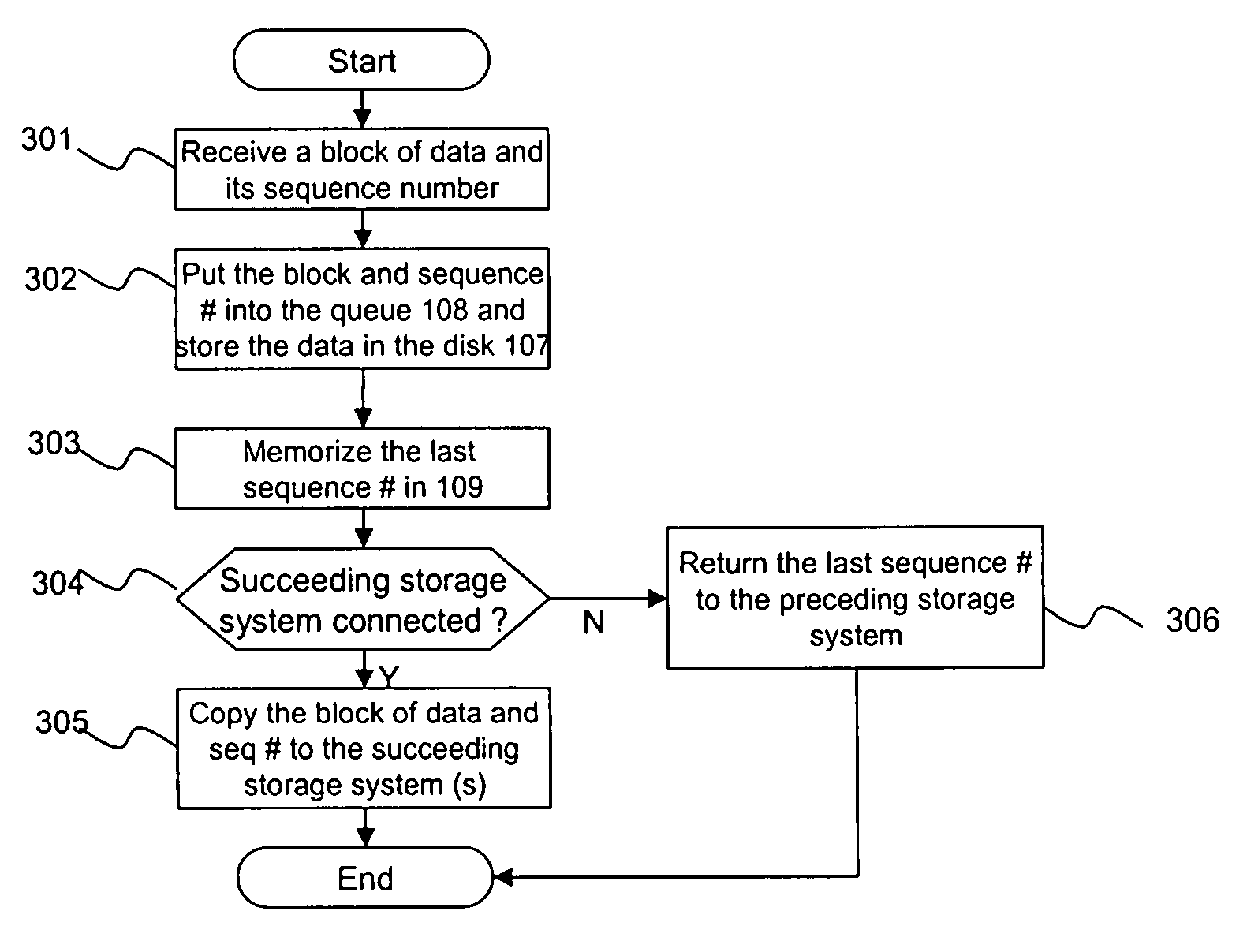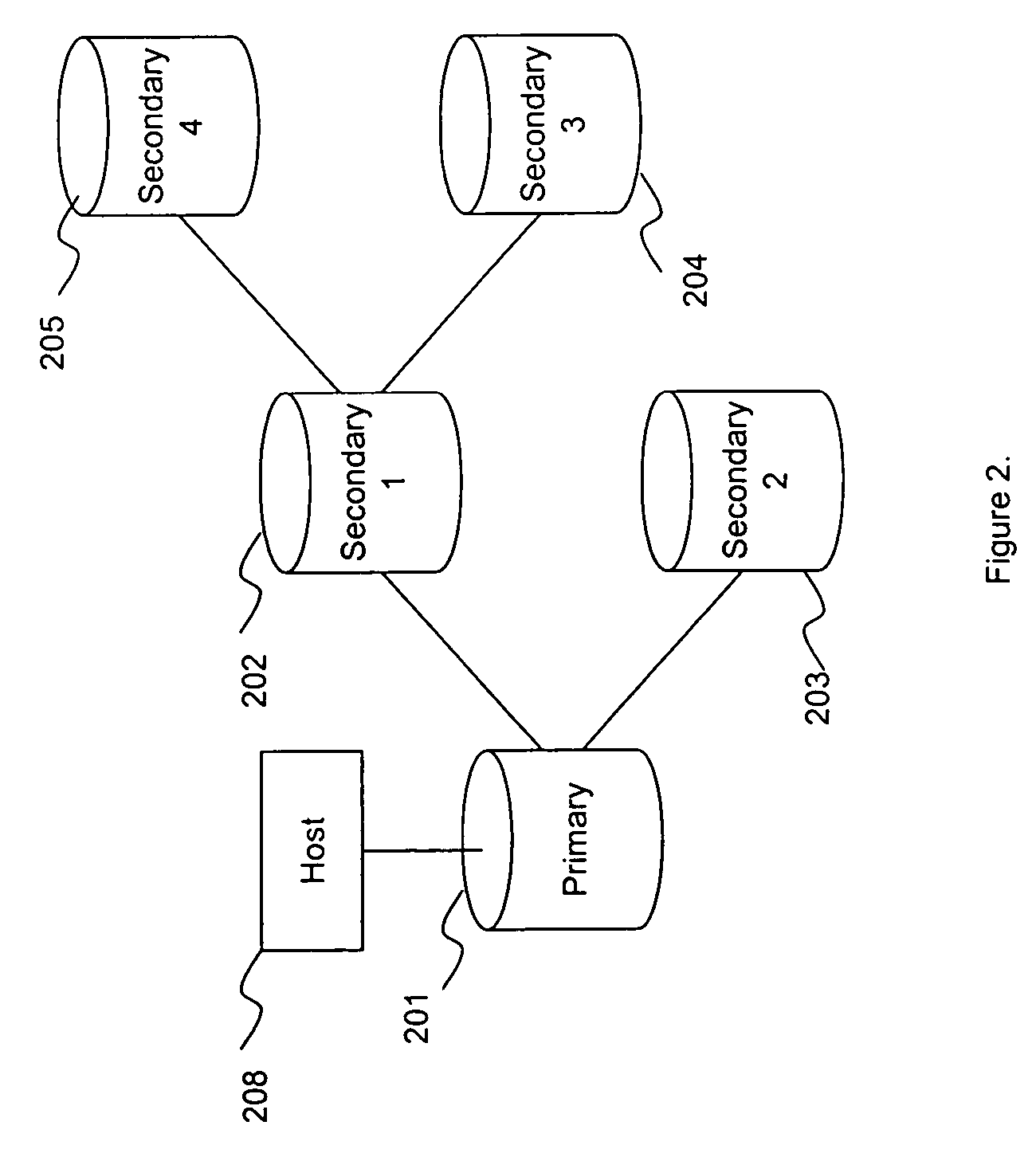Data synchronization of multiple remote storage
a data synchronization and remote storage technology, applied in the field of data processing storage systems, can solve problems such as data regarding future ticketed reservations being lost, interludes of different data images being a problem, and businesses such as airline companies risk chaos, so as to reduce the effect of data synchronization
- Summary
- Abstract
- Description
- Claims
- Application Information
AI Technical Summary
Benefits of technology
Problems solved by technology
Method used
Image
Examples
Embodiment Construction
[0022]FIG. 1 shows a storage system 100 having a host system 101 and a plurality of storage subsystems. The storage subsystems include a primary storage system 102 and a plurality of secondary storage systems 111, 112. The host system 101 is connected to the primary storage system 102 through an IO interface 103 through which input and output are transmitted. Data or information entering the primary storage system 102 is processed by the processor or CPU 106 using the memory 105, and may be stored in the disk or storage medium 107, which may be RAID or just a bunch of disks (JBOD). The memory 105 includes a queue 108 for storing blocks of data and associated sequence numbers, a record 109 for storing the last sequence number, and a table 113 for storing last sequence numbers of succeeding storage systems, as described in greater detail below. An internal bus 110 is provided for conveying internal data. A network interface 104 is coupled to a network to facilitate communication with ...
PUM
 Login to View More
Login to View More Abstract
Description
Claims
Application Information
 Login to View More
Login to View More - R&D
- Intellectual Property
- Life Sciences
- Materials
- Tech Scout
- Unparalleled Data Quality
- Higher Quality Content
- 60% Fewer Hallucinations
Browse by: Latest US Patents, China's latest patents, Technical Efficacy Thesaurus, Application Domain, Technology Topic, Popular Technical Reports.
© 2025 PatSnap. All rights reserved.Legal|Privacy policy|Modern Slavery Act Transparency Statement|Sitemap|About US| Contact US: help@patsnap.com



